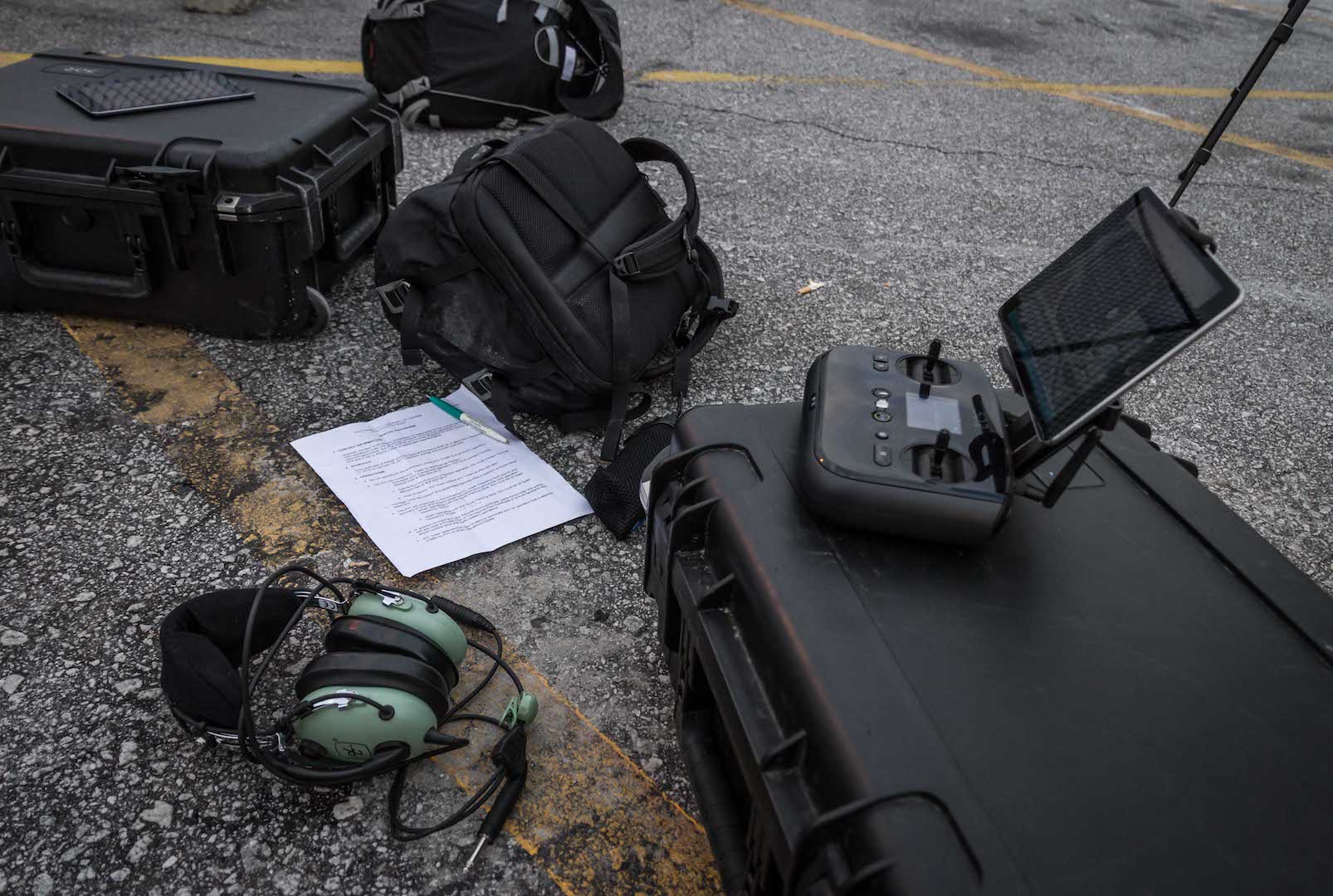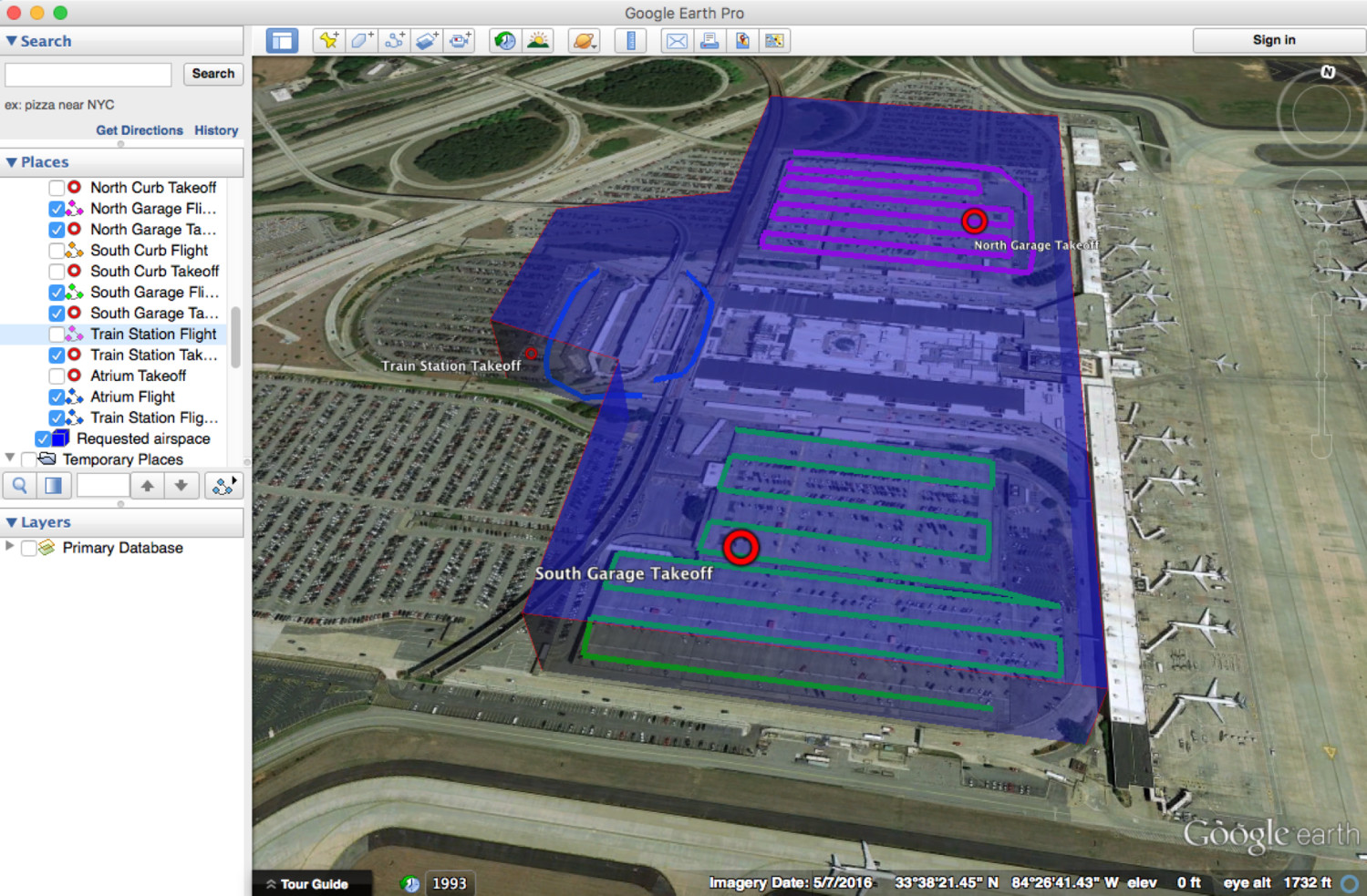FAA Part 107 Study Guide
Requesting a Part 107 waiver or airspace authorization from the FAA
The FAA’s sUAS rules, “Part 107”, mandate that an authorization must be obtained to operate in Class B, C, D and E surface areas. It also allows operators to request a waiver to deviate from the following rules:
- Operation from a moving vehicle or aircraft (§ 107.25)
- Daylight operation (§ 107.29)
- Visual line of sight aircraft operation (§ 107.31)
- Visual observer (§ 107.33)
- Operation of multiple small unmanned aircraft systems (§ 107.35)
- Yielding the right of way (§ 107.37(a))
- Operation over people (§ 107.39)
- Operation in certain airspace (§ 107.41)
- Operating limitations for small unmanned aircraft (§ 107.51)
This article is intended to complement, but not replace, the FAA’s WAIVER AND AIRSPACE AUTHORIZATION APPLICATION INSTRUCTIONS, please review this document carefully.
Note that if you are requesting to fly in controlled airspace, you most likely need an Airspace Authorization, not a waiver to 107.41. Airspace waivers should only be requested for operations having a duration over 24 months.
If the airports near or on which you desire to operate your UAS is participating in the LAANC (Low Altitude Authorization and Notification Capability) program, simply request your authorization through Site Scan’s Airmap integration.
The list of participating airports can be FOUND HERE.
If your LAANC request is at or below the published GRID ALTITUDEfor your area of operation, your flight should be approved automatically and nearly instantly. If you are requesting to fly above the published grid altitude, your request will be reviewed by Air Traffic Control and must be placed at least 24 hours before the proposed flight time, ideally 72 hours or more prior.
For areas outside the LAANC program, request your authorization the on the FAA DRONE ZONE
Next, it’s important to take a look at the WAIVER SAFETY EXPLANATION GUIDELINES relating to your operation. This document lists the legal wording from the Federal Aviation Regulations for each of the aforementioned rules, and the elements that you must describe to justify that the operation can be conducted.
Then, use these 10 tips to improve your chances of having your waiver or airspace authorization granted:
- Ask ahead: the FAA recommends making your request 90 days prior to the proposed start date of your operation.
- Demonstrate safety and risk mitigation measures: take a look the FAA’s Risk Management Handbook. Though not specific to sUAS operations, it offers lots of great advice. Identify potential hazards and describe how you plan to address them.
- Be concise. A longer request does not make for a safer operation. Don’t make the person reviewing your request throw it to the bottom of the pile. Briefly describe the purpose of the request, then focus on how you will ensure safety.
- Don’t ask for more than what you need: if you can complete your mission by flying at 200 feet, don’t ask for 400 feet.
- Suggest imposing limitations on your operation before the FAA does, if it’s in the interest of safety. But don’t “box yourself in” unnecessarily, because the FAA will take you up on these offers. For example, if you will need to be in communication with a control tower, you can offer to always use a Visual Observer who will handle these communications, ensuring that the Remote-Pilot is free of distractions. But perhaps don’t state that you will use 4 VOs, or you will be bound by this and unable to fly with less than that.

- If operating in close proximity to manned aircraft, it may be in the interest of safety to have a remote-pilot who is also a manned aircraft pilot. In this case, list the certificate type and number.
- Demonstrate aeronautical knowledge by using proper terminology, reviewing appropriate aeronautical charts, or employing AERONAUTICAL DECISION MAKING (ADM) concepts for instance.
- Don’t make assumptions; the FAA won’t. For example, even if your aircraft’s return-home feature may seem like a given, it may be part of what makes the operation safe. Don’t forget to state it. One exception: no need to state that you will follow the rules, it is expected that you will follow every rule you are not request exemption from.
- Offer to submit supporting documents if you have any: operation manual, risk assessment sheet, checklists… Make “available upon request” notes in your operation description. You will be able to submit supporting documents when your request is under review.

- If applicable, define the exact boundaries of your operating area in the operation description field (Lat Lon Degrees (°), minutes (‘), seconds (”) of each point defining the polygon). You can use GOOGLE EARTH PRO (free) to create a *.KML file to share with FAA.
3DR Site Scan customers, please feel free to reach out to your Success Services engineer for advice or review of your application.
Interested in working with us?
We are always looking to partner with like-minded organizations and to hire talented people. Send us a message to start the conversation.

